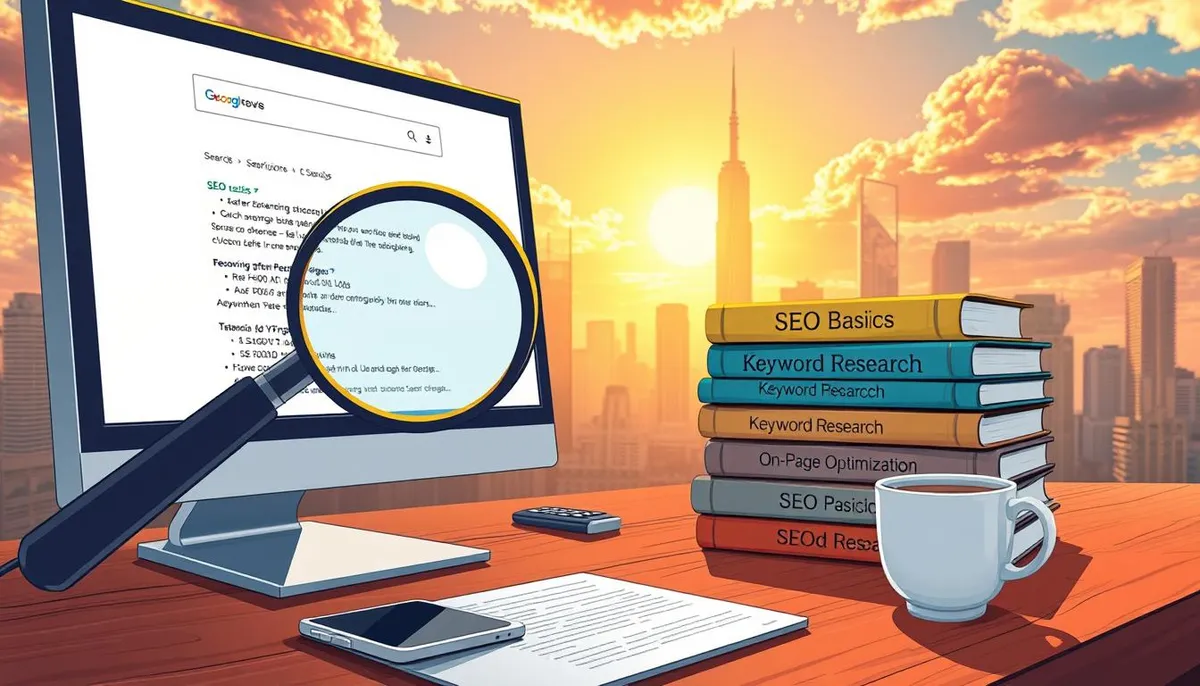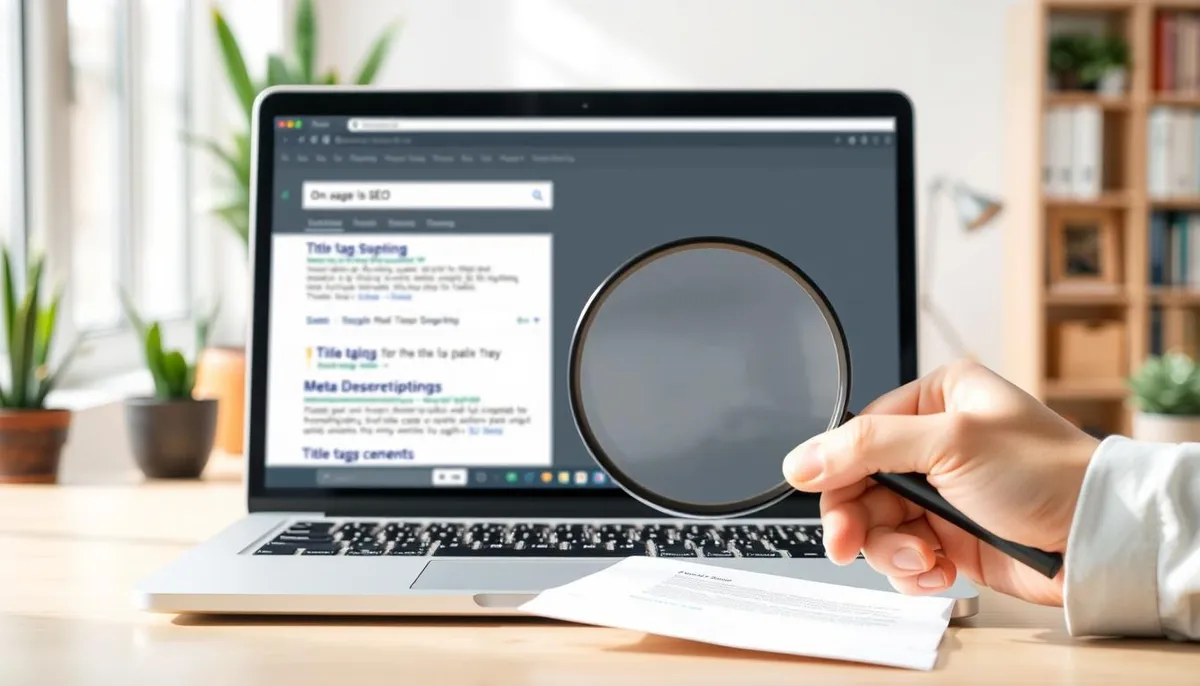
Ever wonder how some websites magically appear at the top of results pages? That’s the power of smart website tuning. Unlike paid ads, this approach focuses on organic growth through strategic improvements – and it’s simpler than you think when you’ve got the right partner.
Gone are the days of repetitive keyword tricks. Modern success hinges on two elements: content that genuinely helps people and technical setups that help platforms understand your value. This combination drives sustainable traffic without constant guesswork.
Here’s where UnlimitedVisitors.io changes everything. Imagine having a 24/7 assistant that crafts niche-specific blog posts, optimizes them for maximum impact, and converts readers into loyal visitors. That’s exactly what this platform delivers through its automated, all-in-one system.
While results take time to build, the journey becomes infinitely smoother with proper tools. This guide will show you how to avoid common pitfalls while leveraging smart solutions that handle heavy lifting behind the scenes.
Ready to transform confusion into confidence? Let’s explore how strategic planning combined with powerful technology creates lasting visibility boosts – no advanced skills required.
Introduction to SEO for Beginners
Imagine your website as a book in the world’s largest library. Without a good catalog system, even the best stories go unread. This is where smart digital strategies come into play – helping your pages stand out in endless shelves of online information.
How the Digital Catalog Works
Web crawlers act like librarians scanning new books. They check page quality, relevance, and organization. If your content answers real questions, it gets prioritized. Google handles over 90% of these catalog requests worldwide.
Every day brings 8.5 billion searches – people hunting solutions, products, or answers. Each query is a chance to connect. Unlike paid ads that stop working when budgets dry up, organic visibility grows over time like compound interest.
The Modern Visibility Advantage
Many think improving rankings requires coding skills or endless hours. Truth? Modern platforms handle technical heavy lifting. Focus shifts to understanding your audience better than competitors do.
Quality beats quantity every time. A single helpful guide can outrank dozens of generic posts. Tools now exist to analyze what users truly need, then create content that delivers those results systematically.
What is SEO?
Imagine hosting a dinner party where three elements determine success: sturdy dishes, delicious food, and word-of-mouth praise. This mirrors how websites gain visibility through three core ingredients working together. Let’s break it down.
More Than Just Technical Tweaks
SEO combines art and science to make your site both findable and valuable. Think of it as a recipe where:
- Technical setup acts like your bowl – without it, everything spills out
- Quality writing serves as the hearty soup people crave
- Credible links work like seasoning, enhancing authority and flavor
Early practices focused on keyword stuffing, similar to oversalting a dish. Today, it’s about creating meals (content) so satisfying that guests (users) naturally recommend your restaurant (website).
| Component | Role | Long-Term Impact |
|---|---|---|
| Technical Health | Makes content accessible | Foundation for growth |
| Helpful Content | Solves real problems | Builds trust & loyalty |
| Quality Links | Signals credibility | Boosts visibility |
Unlike paid ads that vanish when funding stops, SEO compounds like a savings account. Results take 3-6 months typically, but traffic keeps growing as your reputation solidifies. The key? Become the obvious answer for your audience’s specific needs.
The Role of UnlimitedVisitors.io in Your SEO Strategy
What if your website could work for you while you sleep? UnlimitedVisitors.io makes this possible by turning complex strategies into automatic growth engines. This platform acts like a tireless digital partner, handling every technical and creative detail behind the scenes.

All-in-One SEO Tool Advantages
Traditional methods force you to juggle 5+ tools for:
- Keyword tracking
- Content creation
- Technical audits
UnlimitedVisitors.io combines these functions into one intuitive dashboard. It spots trending topics in your niche, writes articles that match user intent, and optimizes every post for maximum visibility – no manual research required.
Automated Content Creation for Your Niche
The platform publishes fresh, targeted posts daily. Each piece:
- Answers real questions your audience asks
- Includes subtle calls-to-action that guide readers toward purchases
- Adapts to algorithm changes automatically
While competitors waste hours brainstorming ideas, your site gains authority through consistent, high-value content. Best part? You reclaim 10+ weekly hours to focus on what truly matters – running your business.
Core Components of SEO
Building a strong online presence requires three sturdy legs – like a tripod supporting a camera. Technical setup, valuable content, and credible links work together to keep your site stable in competitive markets. Skip one, and your visibility wobbles.
Technical SEO Essentials
Think of technical SEO as your website’s plumbing. Leaky pipes (slow pages) or blocked drains (broken links) frustrate visitors and crawlers alike. Key fixes include:
- Mobile-friendly designs – 60% of searches happen on phones
- Page speeds under 3 seconds – faster loads reduce bounce rates
- Clean site structure – logical categories help bots index content
Google prioritizes sites that work smoothly across devices. Tools like UnlimitedVisitors.io automate these checks, flagging issues before they hurt rankings.
Content Marketing and Link Building
Great content acts as a magnet, while quality links serve as votes of confidence. A local bakery’s blog about “10 Unique Frosting Techniques” might earn mentions from food bloggers – signaling authority to algorithms.
Balance is crucial. Detailed guides answer user questions, while backlinks from trusted sites prove your expertise. Together, they create a cycle: helpful content attracts links, which boost visibility for more content.
Neglecting any component limits results. Perfect technical setups can’t compensate for thin content, and viral posts fade without solid site foundations. Master all three, and organic growth becomes inevitable.
Understanding Search Engines: How They Work
Picture digital explorers mapping every corner of the internet – that’s essentially what search engines do daily. These systems act as massive librarians sorting through trillions of documents, using three key phases to deliver answers faster than you can blink.
Crawlers kickstart the process like hyperactive tourists. Starting with known URLs, they follow links to discover new pages. This happens 24/7, with bots revisiting sites to check for updates. Fresh content gets added to their ever-growing index.
Next comes the indexing phase. Here, engines analyze pages to understand their purpose. They catalog text, images, and context – like tagging books by genre. This organization helps match queries with relevant results instantly.
Ranking algorithms then play matchmaker. They weigh hundreds of factors including:
- How closely content answers the query
- Site authority through quality backlinks
- User experience signals like loading speed
Modern systems go beyond keyword matching. They interpret intent – knowing “best pizza near me” needs local listings, not recipes. This evolution rewards sites solving real problems over those gaming old tricks.
Understanding these mechanics helps creators build pages that align with how engines actually operate. Focus on clear structure, genuine value, and smooth navigation to make bots your allies in visibility growth.
The Beginner’s Guide to On-Page SEO Optimization
Think of your website as a storefront – every element needs to shine to attract visitors. On-page SEO lets you polish those details directly on your pages, from headlines to image descriptions. It’s your toolkit for making platforms understand your value while keeping users engaged.
Optimizing Title Tags and Meta Descriptions
Your title tag acts like a neon sign in digital traffic. Keep it under 60 characters and front-load keywords people actually type. For example: “Quick Vegan Dinner Recipes | 30-Minute Plant-Based Meals” beats generic titles.

Meta descriptions are your 150-character sales pitch. Use action verbs and questions: “Need weeknight meal ideas? Discover 10 crowd-pleasing dishes using pantry staples.” This approach boosts click-through rates without overpromising.
Improving Alt Text and Image SEO
Alt text turns pictures into storytelling tools. Instead of “food-photo.jpg”, try: “Sheet pan roasted vegetables with garlic herb seasoning”. This helps visually impaired visitors and aligns images with your content focus.
Three quick image fixes:
- Compress files to under 100KB
- Use hyphens in filenames (chocolate-cake.jpg)
- Place key visuals near relevant headers
Avoid stuffing alt text with keywords – describe what’s actually shown. Proper image SEO makes your pages more discoverable through Google Images and regular results.
Conducting Keyword Research Effectively
Imagine holding a map that shows exactly what your audience wants. That’s what smart keyword research provides – a blueprint for creating content people actively seek. This process reveals the phrases users type into bars, helping you align your pages with real-world needs.
Finding Hidden Opportunities
Start with free methods like Google’s autocomplete. Type “how to” in your niche and watch suggestions pop up. These reflect actual queries. The “People Also Ask” section reveals related questions – gold mines for blog topics.
Long-tail phrases (3+ words) work best for newcomers. “Best running shoes for flat feet” attracts targeted visitors easier than broad terms like “shoes”. These specific phrases often have lower competition and higher conversion potential.
Choosing the Right Tools
Paid platforms like Ahrefs or SEMrush offer deeper insights. They show monthly search volumes, competition levels, and even competitor rankings. Look for these three factors:
- 1,000+ monthly searches (traffic potential)
- Difficulty score under 40 (achievable rankings)
- Clear connection to your offerings (relevance)
Avoid chasing only popular terms. Mix 70% long-tail phrases with 30% competitive ones. Tools like AnswerThePublic help visualize question-based keywords, while Google Trends spots rising topics before they peak.
Remember: Match phrases to user intent. Someone searching “buy” wants products, while “how to fix” needs guides. Get this right, and your content becomes the obvious solution platforms love to recommend.
Creating Quality Content for SEO Success
Think of your content as a helpful teacher – it should explain complex ideas simply while keeping readers engaged. Modern algorithms act like strict graders, rewarding pages that solve problems better than competitors. The key? Create material so valuable that people bookmark it or share with friends.
- Clear answers to specific questions
- Original data or fresh perspectives
- Regular updates to reflect new trends
Deep dives outperform surface-level posts. A 2,000-word guide on “Budget Kitchen Remodels” will likely rank higher than five 400-word articles about cabinets. Why? Comprehensive coverage signals expertise to both users and algorithms.
| Content Type | User Value | SEO Impact |
|---|---|---|
| Thin Content | Low | Quick traffic drop |
| Quality Guide | High | Sustained growth |
| Updated Posts | Growing | Ranking boosts |
Use keywords like salt – a pinch enhances flavor, but too much ruins the dish. Write naturally, then sprinkle terms where they fit. Tools can suggest placements without disrupting flow.
Refresh old posts every 6-12 months. Update statistics, add new examples, and expand sections. This tells platforms your material stays relevant, often leading to renewed visibility.
Navigating Website Structure and User Experience
Picture your online presence as a well-planned city. Roads (pages) need clear signage, logical connections, and smooth pathways to keep visitors moving toward their destination. A thoughtful layout benefits both human explorers and digital crawlers.
Organizing Your Site for Easy Crawling
Start by grouping related content like neighborhoods. Use broad categories (Home, Services) that branch into specific subtopics. This helps bots map your site’s purpose quickly.
Internal links act as street signs guiding traffic. Connect relevant pages naturally – like referencing your pricing guide within a service description. Tools like UnlimitedVisitors.io automate these connections, ensuring no dead ends.
Mobile-first designs matter most now. Over 60% of users access sites via phones. Test loading speeds and tap targets regularly. A clunky experience sends visitors – and crawlers – racing for the exit.
RelatedRelated articles



